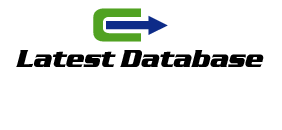Sources: Collect data from various sources such as website analytics, CRM systems, email marketing platforms, social media insights, and lead generation forms.
Metrics: Gather metrics including website traffic, conversion rates, lead sources, engagement levels, and lead quality indicators.
Performance Measurement:
Key Metrics: Track key performance indicators (KPIs) like:
Conversion Rates: Measure the percentage of website visitors who become leads.
Cost per Lead (CPL): Calculate the average cost incurred to acquire each lead through marketing efforts.
Lead Quality: Assess lead quality based on criteria such as demographics, behavior, and engagement.
Attribution Modeling:
Attribution Models: Determine which marketing channels or touchpoints contribute most to lead generation and conversion.
Multi-touch Attribution: Assign credit to multiple marketing interactions across the customer journey, considering channels like SEO, PPC, social media, and email marketing.
Lead Funnel Analysis:
Funnel Stages: Analyze each stage of the lead generation funnel—from awareness to conversion—to identify drop-off points and optimize conversion rates.
Funnel Conversion Rates: Calculate conversion rates at each funnel stage to understand where improvements are needed.
Segmentation and Personalization:
Customer Segmentation: Segment leads Phone Number Lists
based on characteristics such as demographics, behavior, and buyer personas.
Personalization: Use analytics insights to personalize marketing messages and content to better resonate with different audience segments.
Predictive Analytics:
Forecasting: Use historical data and predictive analytics models to forecast future lead generation trends and outcomes.
Lead Scoring: Predict which leads are most likely to convert based on data-driven scoring models and behavior patterns.
Reporting and Visualization:
Dashboards: Create customized dashboards and reports to visualize key metrics and performance trends.
Data Visualization: Use charts, graphs, and visual aids to communicate insights effectively and facilitate data-driven decision-making.
Benefits of Lead Generation Analytics
Optimization: Identify strengths and weaknesses in lead generation strategies to optimize marketing campaigns and improve ROI.

Insightful Decision-Making: Make informed decisions based on data-driven insights rather than assumptions or intuition.
Continuous Improvement: Continuously iterate and refine lead generation efforts based on real-time analytics and performance feedback.
Implementation Considerations
Tools and Technology: Utilize analytics tools such as Google Analytics, CRM analytics modules, and marketing automation platforms like Marketo or HubSpot.
Skills and Expertise: Employ analytics professionals or teams with expertise in data analysis, interpretation, and strategic application.
Integration: Ensure seamless integration between various data sources and platforms to consolidate and analyze comprehensive lead generation data.
By leveraging lead generation analytics effectively, businesses can enhance their ability to attract, engage, and convert leads, ultimately driving growth and achieving marketing objectives more efficiently.


